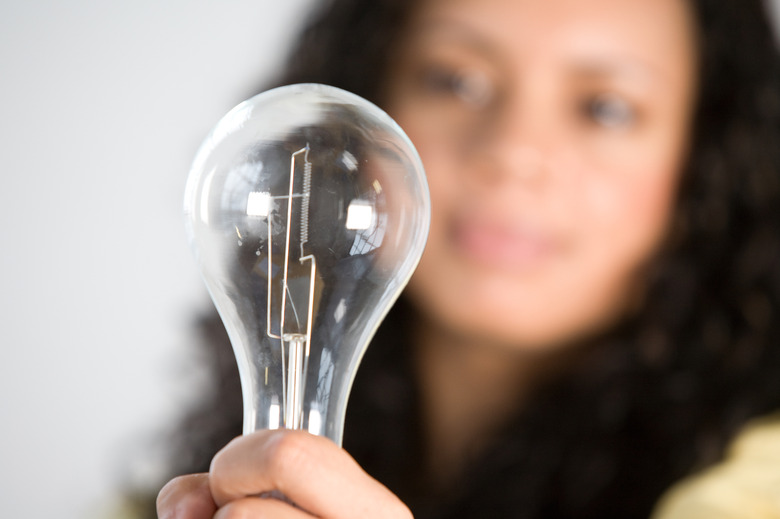Difference Between Light Bulbs For Plants & Regular Bulbs
Plants that are kept indoors, but are not necessarily indoor plants, often suffer from lack of sunlight. Even in a sunny window many plants will not receive the amount of necessary sunlight to grow healthy. This is especially true of plants started indoors for transplanting outside. These plants need supplemental light to be healthy.
Spectrum
Plants need light in the blue spectrum for leafy growth and the red spectrum for budding and flowering. For starting seeds, the lights that produce plenty of blue light are the most important. These include metal halide and full spectrum fluorescent bulbs. Incandescent bulbs don't produce the light necessary in the required spectrum to be of much help to indoor plants.
- Plants that are kept indoors, but are not necessarily indoor plants, often suffer from lack of sunlight.
- Even in a sunny window many plants will not receive the amount of necessary sunlight to grow healthy.
Efficiency
Incandescent lights have a low lumen output per watt, meaning it takes more energy to produce the same light. Standard fluorescent lights are twice as efficient as incandescent bulbs. Metal halide lights are about five times as efficient as similar incandescent bulbs.
Color Temperature
The Kelvin scale is used to indicate the color of the light. The higher the number on the scale the cooler (more blue) the light is; the lower the number the warmer (red) the light is. Sunlight has a high Kelvin number, about 6,000. Incandescent lights are at about 2,700 on the Kelvin scale. Fluorescent and high-intensity lights can be manufactured to any color temperature between 2,800 and 6,000.
- Incandescent lights have a low lumen output per watt, meaning it takes more energy to produce the same light.
- Incandescent lights are at about 2,700 on the Kelvin scale.
Heat
Incandescent bulbs get very hot and should be placed no closer than 24 inches from a plant. Standard fluorescent bulbs stay much cooler and should be placed about four inches above the plants for most effectiveness.
Lifespan
Incandescent grow lights have an average lifespan of 750 hours. Standard fluorescent bulbs last up to 20,000 hours. Compact fluorescent and high-output fluorescent bulbs last about 10,000 hours. Metal halide high intensity discharge grow lights last 10,000 to 20,000 hours depending on the wattage.
